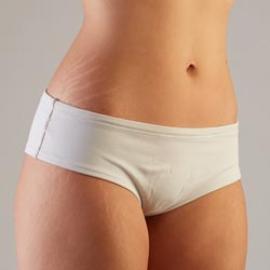
With 20 million Botox ® injections (registered name of botulinum toxin), this aesthetic medicine method, has established itself worldwide as an effective and efficient treatment of expression lines as part of the symptoms of aging of the face.
But botulinum toxin also has other more precise indications such as reshaping the profile. In medical rhinoplasty, Botox nasal injection differs from hyaluronic acid with very specific indications for non-surgical rhinoplasty.
How does Botox work on the nose?
Identified as early as 1946, botulinum neurotoxin A was first used in ophthalmology (strabismus) in the 1970s prior to actually receiving approval in 2002 to be used in anti-aging aesthetic medicine.
Botulinum neurotoxin: definition
It is a toxin defined as neurotropic that paralyzes muscle fibers by relaxing them: we talk about myo-relaxing action, also known as flaccid paralysis.
When a nerve fiber triggers a muscle to contract, the signal is transmitted through the motor plate (neuromuscular synapse). This involves acetylcholine, a neuromediator.
Botox toxin is accumulated on and blocks acetylcholine receptors: acetylcholine can no longer interact and is ultimately resorbed. Without a neuromediator, the muscle no longer has instructions to contract and it relaxes, becoming flaccid.
On which nasal muscles does a botulinum toxin injection work?
- Botox works on all striated muscles, allowing it to block the contraction of all the nasal muscles, generally three of them.
- The procerus muscle or nasal pyramidal muscle is an odd muscle ending in two parts, between the nasal base and the glabella (head of the eyebrows). It leads to the expression of emotion by lowering the eyebrows.
- The nasal wing or nasal septum depressor or myrtiform muscle (M. depressor nasi septi), shuts both nostrils (columella) and lowers the nasal tip downwards.
- The common nasolabial lift muscle (nasolabial elevator muscle or nasolabial wing and upper lip elevator muscle) follows each nasal wing from the forehead, finishing with two sides on the cartilage of the nasal wing and upper lip. It elevates the nasal wing and the upper lip opening the smile.
Indications: when should you do a non surgical nose job?
Botulinum toxin injection for the nose has for main indications to change the contours of a nose "too long" or to remove nasal wrinkles.
Nasal Botox injection : non surgical rhinoplasty
As a non surgical rhinoplasty, botulinum toxin only acts on a nasal appendage that is "too long", if the nasal tip is lowered downwards, particularly when smiling, following the hyper contraction of the nasal wing.
Botulinum toxin nose injection : remove wrinkles
Botox® injection in the nose allows to erase dynamic nasal wrinkles:
- Lateral nasal wrinkles known as "bunny lines" are defined by a wrinkled skin when smiling, like rabbits. They are caused by hypercontraction of the nasolabial lift muscle and may occur very early (20 years).
- Horizontal nasal wrinkles fold the skin under the eyebrows, at the root of the nose, and induce the aging of the eyes. They are linked to the excessive contraction of the nasal pyramid.
A nose Botox injection session.
The injection session will take place at the Clinique des Champs Elysées Dubai Medical Block. The doctor may recommend an anesthetic cream for more comfort, to be applied 30 to 60 minutes beforehand.
This injection is very thorough: your aesthetic doctor must verify that one of the three muscles involved is perfectly targeted. The procedure is carried out in about 15/20 minutes.
Results of Botox® nose injection
The result is not instant, but takes between five and ten days, for a total of six months. To remove nasal wrinkles, the result is usually perfect, with a rejuvenated and smooth nose.
As for non-surgical rhinoplasty, the tip of the nose is lifted by botulinum toxin with a great result. Nevertheless, it remains unpredictable, as it depends on the contraction force of the depressor.




















































